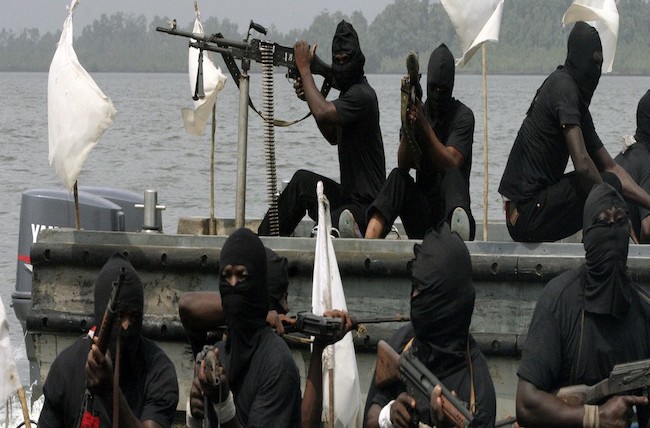

“Best Management Practice” – The English High Court Considers obligations on a Master

On 5th July 2011, the laden tanker Brillante Virtuoso was off the coast of Yemen drifting in darkness in some of the most dangerous waters of the world. Shortly before midnight, it was boarded by armed men who put in motion a chain of events that would see the owner condemned by the High Court in London[1] as a co-conspirator in a plan to render the vessel a total loss. The Court was satisfied that the armed men who were seemingly “invited” on board and who the owners said were Somalian pirates disguised as Yemeni coastguard officers, were part of an elaborate scheme to defraud the vessel’s insurers. However, as part of its deliberations the Court considered the legal ramifications of the master’s alleged failings to follow Best Management Practice (“BMP”). This is the first time that the industry guidelines have been reviewed by the Court. The judgment provides useful guidance for Company Security Officers and all Masters who operate in high risk areas.
The owner’s war policy provided that when in the Gulf of Aden and Indian Ocean, the vessel/owners were subject to a clause that obliged them to apply BMP (the “Subjectivity Clause”) “whilst transiting/port call within Gulf of Aden” with some recommended steps that were to be applied prior to entering the area. In the light of the Court’s findings that the Master and the Chief Engineer were also co-conspirators with the armed men and the owner, the insurance claim for the loss of the vessel failed. However, it was necessary for the Court to consider the position of the mortgagee bank and whether it could claim in its own right for a loss under the policy. As part of that process it was argued that the Subjectivity Clause imposed a legal obligation on the Master to adopt the steps set out in BMP.
BMP, now in its fifth edition, was initially produced to provide guidance on the steps an owner and master should take when entering the high risk areas in the Indian Ocean at the height of the Somalian piracy phenomenon between 2008-2013. A similar guide is being produced for operations in and around the Gulf of Guinea where crews continue to be kidnapped by Nigerian based pirates.
The Court’s findings – Master must act in “good faith”
The Court accepted that BMP contains only advice and recommendations and those are subject to the discretion of the master, but asked what the “Subjectivity Clause” required the master and owners to do.
The Court’s approach was based on the principle that the reasonable commercial man would construe the insurance policy:
“…in such a way as to minimize the uncertainty as to whether, in the event of a loss, there is cover or not.”
Significantly this meant that any action taken by a master in the context of the recommendations in BMP cannot simply be considered objectively as to whether it was right or not. The obligation is only that the master in making a decision about protecting the vessel must take into account those recommendations within BMP in “good faith”. Indeed the Court went onto say that “…any stricter test would be inappropriate in the context of decisions made by a master of a vessel…”.
The Court then went on to consider some key elements in BMP which it was argued had not been followed, applying the above criteria. A summary of what good practice would be is set out below.
Risk Assessment
BMP refers to the need of carrying out a Risk Assessment in anticipation of transiting a high risk area.
The Risk Assessment does not have to be in any particular form. However, simply following a generic risk matrix even one laid down in the Ship’s Security Plan (“SSP”) would be meaningless in the context of a transit across a high risk area and would not be acting in good faith. It must be genuine and apply to the actual voyage and include reference to:
- Crew Safety
- Freeboard
- Speed
- Sea state
- Piratical activity
Further, the risk assessment should be approved by the CSO.
Any reasonable risk assessment would conclude that a vessel operating in the Gulf of Guinea and off Nigeria is operating in a potentially hostile environment. Or, in the language of the Conwartime clause, that the area is potentially exposed to the real likelihood that the vessel will be exposed to the risk of piracy. The Risk Assessment must reflect that.
Contingency Plan
BMP also refers to the need for a contingency plan and for that to be “exercised, and discussed” between the master and Ship’s Security Officer.
Planning should be evidenced by the minutes of onboard security meetings and drills need to take place, particularly around moving the crew to a citadel. Often such a plan is contained in the SSP.
Drifting
Often ships are ordered to drift (particularly off West Africa) to avoid staying within the HRA. BMP as it relates primarily to the Indian Ocean envisages vessels as being underway. However, whether drifting in areas of higher risk is acceptable will depend as to whether that decision is made in good faith and by reference to the Risk Assessment
Emergency Communication Plan
This is an important part of the planning process and there must be some regard to the ability of the crew to communicate and have access to and knowledge of relevant emergency numbers.
High State of Readiness and Vigilance
This is set out as a clear recommendation in BMP. It was argued that such an obligation was too vague to have any suspensory effect as a warranty under the policy. The Court disagreed, with the judge saying that he could not envisage an owner contemplating that anything less than a high state of readiness would be appropriate in an HRA. Significantly the Court found that this was part of the warranty but that the master would be compliant if he had endeavored to ensure in good faith, that a high state of readiness and vigilance is maintained. That may include having engines and equipment on stand-by. It may also require extra look outs and hardening when leaving and entering the HRA. But the good faith of the actions taken or not taken will arise directly out of the Risk Assessment.
In the context of operating in the Gulf of Guinea where vessels often have to wait weeks at remote anchorages in areas where attacks have taken place this is also important. Maintaining a high level of vigilance takes effort, discipline and commitment. If the risk is assessed (in good faith) as “low” then the need to maintain a high state of readiness will fall away.
As part of that process, decisions will need to be made about whether hardening measures are appropriate and have been considered.
Conclusion
The Court was considering BMP in the context of a potential breach of warranty under a policy of insurance, but the test of good faith in the context of industry guidance as set out in BMP is a sensible approach and would easily apply in any other contractual context. Often claimants in the charter chain would consider a claim for losses arising from piracy as an argument based on unseaworthiness. Notwithstanding the difficulties of causation (which are beyond this article) there is now an argument which is not based on an objective critique of the actions taken or not taken by a master but on a consideration as to whether the master has acted in good faith. Master’s should be pleased that the Court has recognised that they must have the discretion to run their ships as they see fit.
Having been involved in a number of extended duration robberies and kidnappings in West Africa that have all been successfully resolved we have learned a number of lessons that can be applied and passed to the crew operating in the area. We would be happy to discuss this further.
Please contact Stephen.askins@tathamlaw.com

